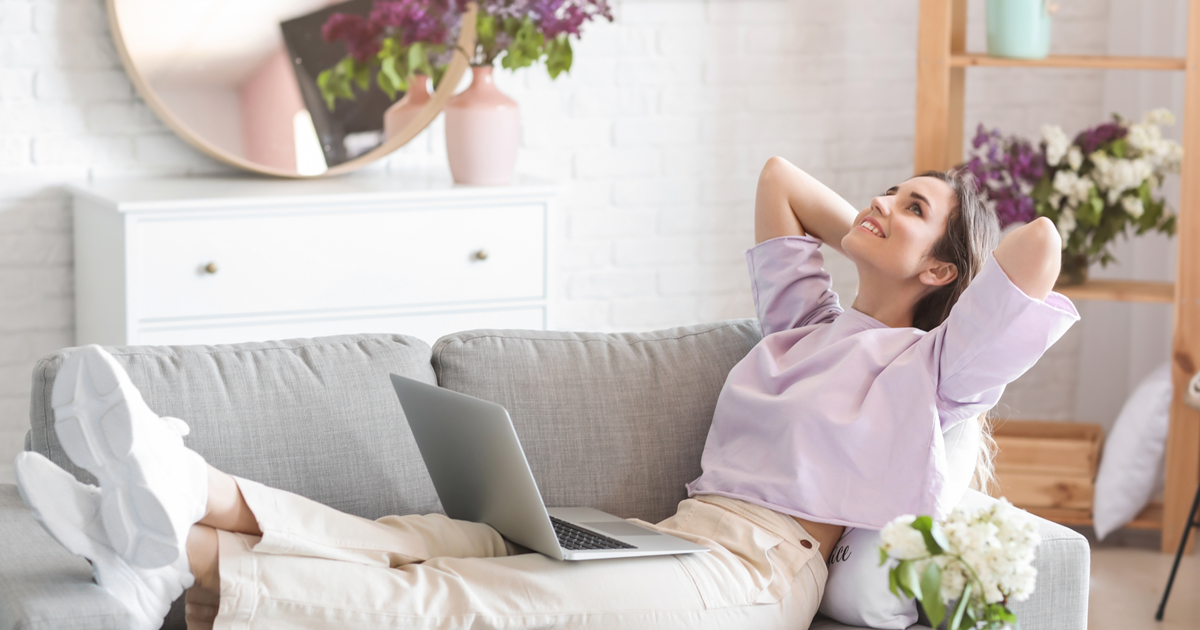We often think of home as a physical space—a roof, walls, furniture. But the truth is, our homes are more than just places we live. They’re emotional ecosystems. They affect how we feel, think, and respond to daily life. The design, cleanliness, colors, lighting, and even the noise level in your living space can directly impact your mental health.
Over the years, I’ve come to realize that my home isn’t just where I rest—it’s where I recharge, reflect, and reconnect. When my space is cluttered, I feel scattered. When it’s calm and organized, my mind follows suit. And I’m not alone.
Let’s explore how your home environment can be either a source of stress—or a powerful sanctuary for emotional well-being.
🏠 Why Your Home Environment Matters
Your brain is constantly taking cues from your environment. Think of it like a sponge—absorbing colors, sounds, scents, and sensations. These sensory inputs affect your mood, energy levels, and focus. When your space is chaotic or overwhelming, it mirrors in your thoughts. But when your space feels peaceful, your mind can exhale.
🧠 1. Clutter and Mental Clarity: The Hidden Link
Ever noticed how hard it is to concentrate when your home is messy? That’s not just coincidence.
Studies show that clutter increases cortisol (the stress hormone) and makes it harder for your brain to process information. It’s a form of visual noise that can overwhelm your mental bandwidth.
Simple Fix:
- Start small: one drawer, one shelf.
- Adopt a “one in, one out” policy for new items.
- Make your bed every morning—it sets the tone.
A tidy space can create a tidy mind.
🌿 2. Nature Indoors: A Natural Mood Booster
Natural elements—sunlight, plants, fresh air—are proven to reduce stress and anxiety. Biophilic design (bringing nature inside) improves mental clarity and emotional balance.
Try This:
- Keep a few indoor plants (e.g., snake plant, pothos, or peace lily).
- Open windows regularly to let fresh air in.
- Use natural materials like wood, linen, or bamboo in your décor.
Even a small plant on your desk can make a surprising difference in how grounded you feel.
🎨 3. The Power of Color Psychology
Colors have a subconscious effect on your mood. Cool colors tend to soothe, while warm tones energize. Harsh lighting and bold patterns can trigger sensory overload, especially for people prone to anxiety or overstimulation.
Color Tips:
- Blues and greens = calm and focus
- Yellows and oranges = warmth and energy
- Neutrals = serenity and flexibility
You don’t need a full makeover. Even changing pillow covers or wall art can shift the emotional tone of a room.
🛋️ 4. Personalization: Your Space, Your Identity
Your home should feel like a reflection of you. When your space aligns with your values and personality, it provides emotional stability and a sense of belonging.
What to Include:
- Photos of loved ones
- Art that inspires you
- Objects that hold sentimental meaning
Avoid the trap of designing for appearances or trends. Instead, focus on what makes you feel seen, safe, and supported.
🔇 5. Sound & Silence: How Acoustics Affect Emotions
Noise pollution—even subtle background hums or street sounds—can trigger restlessness, irritability, and fatigue. On the flip side, soothing sounds can help you relax and sleep better.
Upgrade Your Sound Environment:
- Use a white noise machine or calming music
- Add rugs or curtains to reduce echo and noise
- Designate a “quiet zone” for reading or meditation
Even a few minutes of intentional silence can help reset your nervous system.
🕯️ 6. Lighting: Setting the Emotional Tone
Lighting affects your circadian rhythm, mood, and productivity. Harsh, artificial lighting can disrupt sleep and elevate stress levels, while warm, dimmable lighting creates a cozy, secure feeling.
Lighting Tips:
- Use warm-tone bulbs in bedrooms and living areas
- Maximize natural light during the day
- Add candles or Himalayan salt lamps for ambiance
Your lighting shouldn’t just help you see—it should help you feel.
📦 7. Boundaries Within the Home
If you live with others, especially in smaller spaces, it’s important to carve out areas that are just for you—even if it’s just a reading chair or a corner with your favorite lamp and journal.
Boundaries protect your peace.
💡 Final Thought: You Deserve a Home That Heals
Home is your most intimate environment. It holds your memories, your energy, and your routines. And whether you realize it or not, it’s shaping your mental state every single day.
The good news? You don’t need a designer or a huge budget. Small intentional shifts—decluttering a shelf, adding a plant, softening the lights—can turn your space into a haven.
Because when your home feels better, so do you.
🙋♀️ FAQs
1. Can changing my home really improve my mental health?
Yes. Environmental psychology shows that small changes in your space can lead to big emotional improvements.
2. I live in a small space—how can I make it feel better?
Decluttering, maximizing light, and personalizing even a small corner can have a huge impact.
3. I feel emotionally drained at home—what should I do first?
Start with one small area (like your bedside table or desk). Clear it, clean it, and add one object that makes you smile.
4. How often should I refresh or clean my space?
Weekly tidying routines help maintain calm. Seasonal refreshes (spring/fall cleaning) give your home new energy.
5. I have roommates/family—how can I protect my emotional space?
Communicate your needs, create visual boundaries, and schedule quiet time for yourself regularly.






